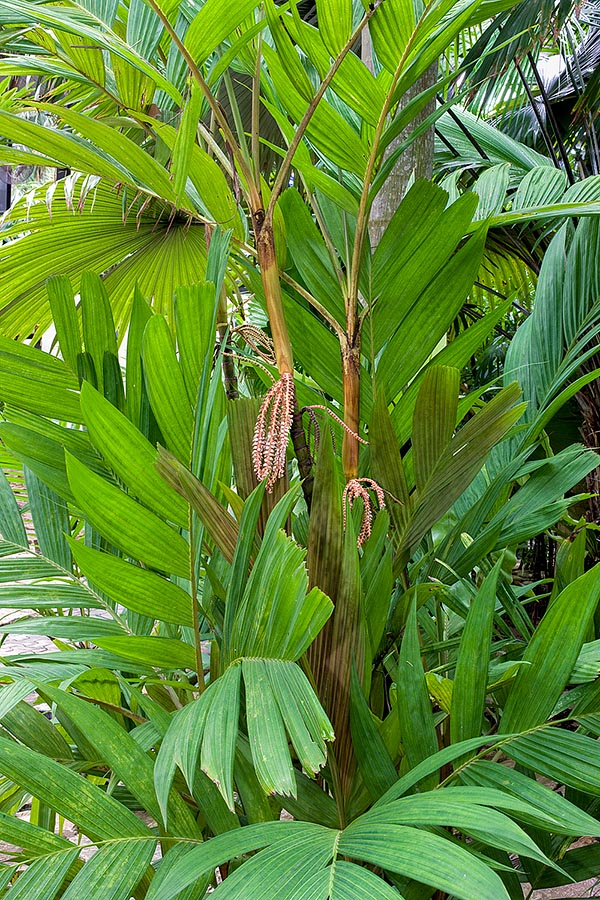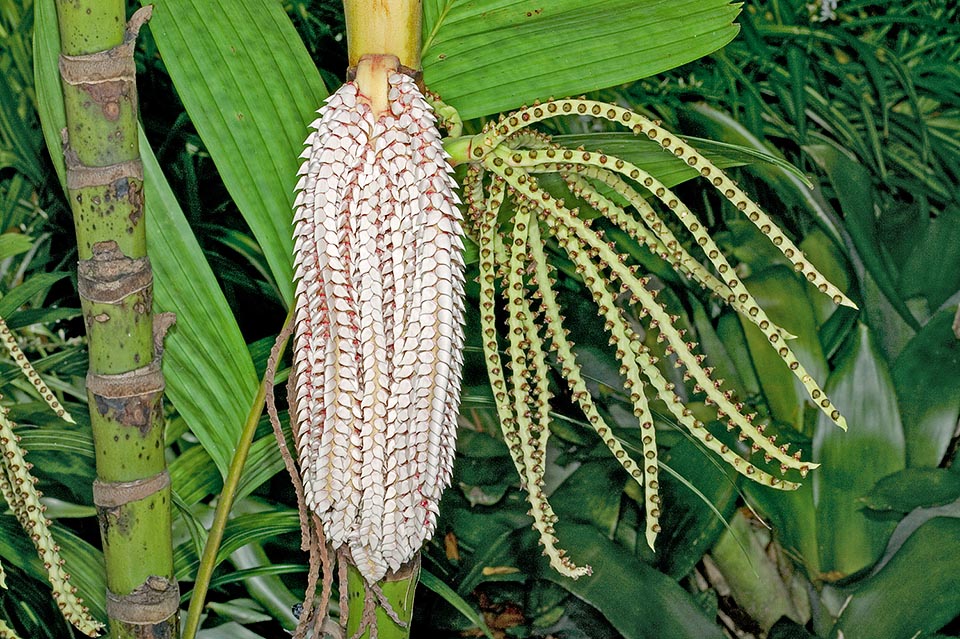Family : Arecaceae

Text © Pietro Puccio

English translation by Mario Beltramini

The Pinanga kulhii is a cespitose species native to the Andaman and Sunda Islands © Giuseppe Mazza
The name of the genus is the Latinization of the Malaysian name ‘pinang’, the species is dedicated to the German naturalist Heinrich Kuhl (1797-1821).
In the English-speaking countries it is known as “ivory cane palm”.
Cespitose plant with rather thin trunks (about 4-5 cm of diameter), which seldom exceed the 6 metres of height, smooth and of a pale green colour, from where stand out the rings marking the junction of the fallen-off leaves.
The leaves are pinnate, up to 1,5 m long and 70-80 cm wide, and irregularly divided in few pleated segments of varying width, with sharp, or blunt-ended and indented, extremity.
The ramified and hanging inflorescences come out under the leaves, the flowers, of both sexes, are small and pinky white.
The ovoid fruits, about 12 mm long, are of red colour, turning to black when ripe. The seeds germinate in 3-4 months.
Plant of remarkable ornamental effect.
It can be utilized in tropical and subtropical climatic areas, in shady position and in constantly wet, fertile, soils.
It is somewhat sensible to low temperatures as it does very seldom, and for a very short time, tolerate just below zero temperatures.
It can be cultivated also in pot for the decoration of interiors.
Synonyms: Ptychosperma kuhlii (Blume) Miq. (1855); Seaforthia kuhlii (Blume) Mart. (1845); Pinanga kuhlii var. alba Scheff. (1873); Pinanga kuhlii var. sumatrana Scheff. (1873); Pinanga sumatrana (Scheff.) H.Wendl. (1875).

The thin 4-5 cm stems rarely exceed the 6 m. The ramified and drooping inflorescences bear small flowers of both sexes, white pinkish © Giuseppe Mazza
→ For general notions about ARECACEAE please click here.
